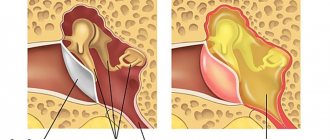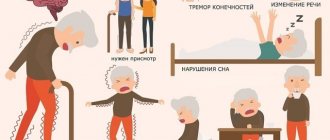Reasons for development
Factors contributing to the development of atheroma on the head are:
- metabolic disorders leading to changes in the properties of the secretion of the sebaceous glands;
- hair dyeing, head shaving with damage to hair follicles;
- hyperhidrosis (especially in combination with seborrheic dermatitis);
- inflammatory diseases of the scalp;
- low-quality hygiene products for hair care;
- Irregular hair washing with the accumulation of viscous oil on the scalp.
Atheromas often form not only on the scalp, but also around the ears and on the chin.
Etiology of warts on the head
In addition to the papilloma virus already mentioned above, which is detected in 90% of people during PCR diagnostics, the following triggers can provoke the formation of warts on the head:
- Decreased immune system of the body;
- Stress, overwork, nervous-emotional tension;
- Poor nutrition, vitamin deficiency;
- Hormonal imbalance;
- Mechanical damage to the skin of the scalp;
- Severe infectious or inflammatory process.
Quite often, the appearance of primary (maternal) warts on the head is observed in children, due to the imperfection of the child’s immune system, as well as in pregnant women whose bodies are subjected to serious hormonal stress.
Clinical picture
The cyst is a soft lump with rounded contours, located subcutaneously. Even small atheromas are clearly visible if you part your hair and carefully examine the changed skin.
Non-inflammatory atheromas are painless and do not cause discomfort, but if an infection occurs (which almost always happens with an accidental injury), the symptoms become more obvious. Suppuration of the cyst leads to its increase in size, intense pain, redness of the skin, and local swelling. The skin in the area of the inflamed atheroma is hot, and pus may be released from the outlet of the sebaceous duct.
Symptoms
Clinical manifestations and severity of symptoms depend on the primary location and size of the tumor.
Most often, soft tissue sarcomas of the head and neck are asymptomatic.
May be observed:
- pain;
- paresthesia is a disturbance of sensitivity along the course of peripheral nerves, which can manifest itself as burning, numbness, tingling;
- nerve palsies;
- trismus – spasm of the masticatory muscles, which is characterized by limitation of movements in the temporomandibular joint;
- ulceration of the mucous membrane;
- dysphonia is a phenomenon characterized by impaired vocal function;
- dysphagia – difficulty swallowing.
When soft tissue sarcomas are located near the nose, nasal congestion may occur that does not go away over a long period.
Treatment
The most effective way to remove atheromas with minimal risk of recurrence is radio wave excision using the Surgitron device (USA). The procedure does not require shaving the hair; removal takes place under local anesthesia in 30 minutes. Bleeding does not occur due to instant coagulation of blood vessels. The scalp and hair are not damaged. Removal of the formation is non-contact; after the procedure, the doctor carries out an antiseptic treatment and a follow-up examination of the patient. The procedure is outpatient and does not require hospitalization.
Is it painful to remove warts?
Removing warts using cryodestruction is painful.
Painful sensations are observed both during the period of removal and after it, when an inflammatory reaction is formed.
If electrocoagulation or laser is used, there is no pain.
Because anesthesia is used.
When a wart is located on the scalp, topical anesthesia is usually used.
A cream containing prilocaine and lidocaine is applied to the skin.
After a few minutes, skin sensitivity disappears.
The doctor can remove the wart, and the patient does not feel anything during the procedure.
After its completion, when the anesthesia wears off, there is no pain either.
Drug treatment of growths on the scalp
First of all, you need to consult a doctor and donate blood for an immunological test. This will help you choose the right medications. Typically, interferon-based products are used to treat growths on the scalp. In addition, they are supplemented with ointments, such as Feresol, creams and ointments based on fluorocyl, salicylic and retinoic acid. You can also analyze the condition of your skin and hair using a trichogram.
Folk remedies for the treatment of warts
Traditional medicine offers quite effective means for removing warts on the scalp:
- Lubricate the growth two to three times a day with iodine until it falls off
- Drizzle lemon juice on it. The wart will be destroyed by fruit acids
- Apply celandine juice to the growth 3 times a day
- Every day, drip acetic acid on it.
- Apply tincture of wormwood.
But we warn you once again that self-medication of a wart, especially a large one, threatens its injury and degeneration. So before using folk remedies, consult your doctor. Remember that your health is in your hands.
Treatment methods
The treatment method for cylindroma is selected by the doctor based on the results of the biopsy, as well as depending on the location and presence of ulcerations of the tumor. In general, cylindroma is well treated and disappears without a trace.
Surgery
A single cylindroma responds well to treatment by excision of the tumor node, even with a simple surgical scalpel. Surgery is performed under local anesthesia. However, in the case of atypical tumor localization or location near nerve and vascular trunks, doctors at the Euroonco clinic give preference to other types of treatment.
Laser treatment
Laser treatment allows you to remove a cylindroma with minimal trauma to surrounding tissue and, accordingly, with a minimal residual scar, sometimes completely invisible. This method of treating cylindromas involves the ability of a laser to burn out areas of the tumor.
Laser treatment is an alternative to classical surgery and can be used for small tumors. To remove large tumors, several sessions of such treatment may be necessary, or it is better to give preference to other methods.
Chemotherapy
In the presence of multiple nodes (Spiegler's syndrome), surgical or radiation treatment cannot be performed due to the large area of the lesion and possible complications in the postoperative period. In this case, preference is given to drug therapy aimed at suppressing tumor growth. Most often, combination treatment is used. The drugs can be used both systemically and locally in the area of development of the cylinder. Chemotherapy does not completely get rid of the disease, but only reduces the activity of the process.
Treatment of warts in children and adolescents.
The appearance of warts on the scalp during adolescence is often caused by hormonal changes occurring in the body and goes away over time. Therefore, there is no need to rush to remove them.
The same applies to growths that appear in young children. The reason for their appearance is weakening of the immune system. The formation of papillomas is caused by dirt getting into scratches, cuts and irritated skin.
Baby warts have the shape of nodules that resemble seaweed. In addition to the head, they appear on the face and hands. Heavy sweating also provokes the appearance of growths on the scalp in children.
However, children's warts should not be removed either, since they disappear without a trace with age. Strengthening the child’s immunity with the help of immunomodulators and vitamin-mineral complexes will help get rid of them. According to the doctor's recommendations, medicinal ointments can be used.
Removal
There are several methods for removing warts:
- Laser. A modern effective method for removing skin tumors, performed under local anesthesia. Read more about the method here
- Cryodestruction. This is the removal of growths using liquid nitrogen. The skin around them is not damaged and no scars remain.
- Electrocoagulation. The growth is burned out by high-frequency current, which causes the death of viruses. This is a bloodless method of removing tumors.
- Extensive, fused growths on the scalp are removed surgically.
Treatment of warts
If you have such a growth on your scalp, do not self-medicate under any circumstances.
This can cause many complications:
- There is a high risk of infection and severe inflammation;
- A large, unsightly scar may form in place of an improperly removed growth;
- It is impossible to completely remove the growth on the scalp at home. If its root remains, you risk getting a scattering of new papillomas;
- There is a high risk of an injured wart degenerating into a malignant tumor;
- In addition, what you consider to be a wart may turn out to be a dangerous neoplasm, and if you injure it, you can get a serious oncological disease.
Causes of warts on the skin
The appearance of growths on the scalp can be caused by two reasons:
- exposure to human papillomaviruses (HPV);
- age-related changes.
There are several types of viruses that form papillomas. They are very active, especially those that cause the appearance of simple warts. You can become infected with them through any contact:
- using the personal belongings of a sick person: his dishes, clothes, towels, etc.;
- visiting a bathhouse, sauna;
- in public transport and shops, holding handrails, handles of carts and baskets.
In addition, HPV can be infected from any, even minor, damage to the scalp.
Once in the human body, the virus may not manifest itself for a long time. But as soon as a person’s immunity weakens, the virus begins to act.
The activity of the human papillomavirus is caused by:
- Diseases of the gastrointestinal tract;
- Frequent infectious diseases;
- Certain medications;
- Stress, lack of sleep;
- Bad habits;
- Profuse sweating.
Thus, the appearance of viral warts on the scalp primarily indicates a weakened immune system and a general deterioration in a person’s condition.
Benign skin tumors
Warts
Warts are convex benign formations, formed as a result of strong growth of the epithelium and the underlying papillary layer of skin, with clearly defined boundaries and a color similar to the color of the skin or darker.
The surface of this type of formation is uneven and bumpy. This is a skin disease caused by a viral infection in the body. The causative virus in this case is one of the types of papilloma virus (there are more than 60 of them).
The size of the wart and its appearance depend, first of all, on its location on the body of the sick person. Also, these parameters depend on the level of irritation (or trauma) to which this area is exposed.
There are different types and types of viruses that cause warts. The most common is a virus that causes “ordinary” warts to appear on the patient’s body - they are benign. Their diameter usually does not exceed one centimeter; such a wart is a fairly dense tumor with clear boundaries and an uneven surface.
The shape of such a wart is in most cases round, but irregularly shaped warts are also found. The color of this type of wart can be yellow, light gray, dark gray or brown. Quite often, warts of this type are localized in those places on the human body that are constantly injured. The most “popular” places for warts to appear are the soles, elbows, fingers, knees, and scalp.
There are also other warts of the most unusual shapes - for example, warts that look like cauliflower. Warts of this kind are most often found on the neck and head of people, especially the skin that is located under the hair on the head suffers from such warts.
This virus is transmitted from one person to another during direct contact - for example, shaking hands.
Common objects such as door handles, office equipment, etc. can also be carriers of the papilloma virus. The virus that causes warts lives in the outside world for no more than three hours, but this is enough time for one more person to be at risk of developing warts.
Infection with the papilloma virus occurs most easily if a person sweats excessively. A person is also at risk if he frequently engages in work such as hand washing, cleaning, etc. – with it, many small injuries form on the skin.
At the Kasmed clinic, various methods are used to remove warts. The most commonly used and cost-effective method is cryodestruction, i.e. cauterization with liquid nitrogen. If necessary, the doctor prescribes a course of antiviral therapy.




